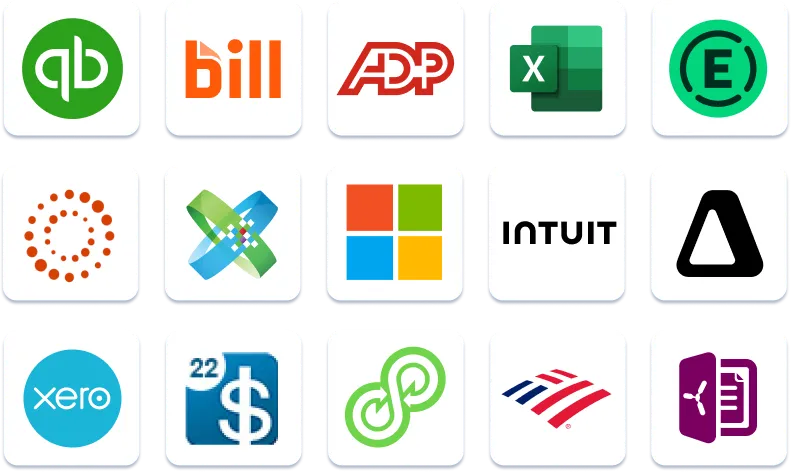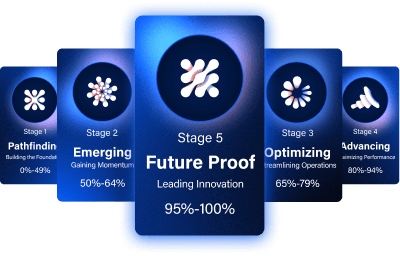Despite the cloud’s growing prevalence, many professionals still approach this technology with a mix of curiosity and caution. The idea of moving sensitive data off-premises gives many decision-makers pause. After all, how secure is your data in the cloud when it’s stored in remote data centers?
Here’s the paradox: According to our most recent technology survey:
- One-third of firms that have moved less than 50% of their data to cloud environments cite security concerns as their primary hesitation, yet…
- Firms that have adopted cloud technology recognize improved cybersecurity as a significant advantage, second only to flexible work capabilities.
In this post, we’ll address your cloud security challenges head-on, explain what ensuring data security really means, and show you how to protect your data in modern cloud infrastructure.
Table of Contents
- The Problem: What’s Making Organizations Hesitate?
- Understanding Cloud Security in Multi-Cloud Environments
- The Solution: How Cloud Providers Keep Your Data Secure
- Essential Cloud Security Tools and Technologies
- Common Cloud Security Mistakes to Avoid
- Taking Action: Your Role in Cloud Security
The Problem: What’s Making Organizations Hesitate?
Your concerns about cloud security are valid. High-profile data breaches make headlines regularly, and the thought of entrusting valuable data to a third party feels risky. The most common security challenges that keep organizations from fully embracing the cloud include:
Fear of Data Breaches
Sensitive information seems more vulnerable when it’s not under your direct physical control.
Confusion Over the Shared Responsibility Model
Many don’t understand where the provider’s security ends and theirs begins.
Account Hijacking Concerns
Worries about unauthorized access through compromised credentials.
Compliance Uncertainties
Questions about meeting regulatory requirements like GDPR, HIPAA, or PCI DSS.
Human Error Risks
Statistics show that 88% of cloud-related security incidents stem from user mistakes.
Expanding Attack Surfaces
Multi-cloud environments can create additional vulnerabilities if not properly managed.
These aren’t just theoretical concerns—they represent real risks that need addressing. But here’s what many don’t realize: properly managed cloud infrastructure often provides better data security than traditional on-premises solutions.
Ready to understand how cloud technology addresses these security challenges?
Download Our Cloud Security Guide
Understanding Cloud Security in Multi-Cloud Environments
Cloud security encompasses the technologies, policies, procedures, and security controls designed to protect cloud-based systems, data, and infrastructure. Unlike traditional IT security, which focuses on protecting internal networks, cloud security extends to resources managed by third-party providers across multiple cloud environments and accessed remotely.
The key objectives include:
- Maintaining the CIA triad: Confidentiality, Integrity, and Availability of your data.
- Preventing unauthorized access to sensitive information.
- Protecting user accounts and cloud-based applications from cybercriminals.
- Ensuring compliance with industry standards and regulatory requirements.
- Implementing identity and access management across all platforms.
How do third-party cloud providers achieve robust data security? By unifying applications in a platform that can detect and respond to threats in real-time. As Crowdstrike puts it:
“To effectively reduce cloud security risk, organizations need a security solution that can provide deep visibility into asset inventory and real-time risk exposure alongside cloud threat detection and prevention. This requires a unified platform that spans across development, operations and runtime to provide continuous visibility, protection and response.” Insider’s Playbook: Defending Against Cloud Threats, Crowdstrike
Myth-Bust Common Cloud Security Concerns: Download the eBook →
How Cloud Providers Keep Your Data Secure
While no system is 100% impenetrable, reputable cloud providers offer security measures that often surpass what most businesses can implement independently. Here’s why:
1. Their Entire Business Depends on Security
Cloud providers stake their entire business on ensuring data protection. One breach can destroy years of trust-building and send customers fleeing to competitors. This creates a powerful incentive for providers to invest heavily in security controls—far more than most individual organizations can afford.
2. Multi-Layered Security Approach
Unlike single-solution security software, cloud providers implement comprehensive strategies to detect and respond to threats, including:
- Enterprise-grade firewalls and intrusion detection systems
- Data encryption both in transit and at rest within their data centers
- Regular security audits and penetration testing
- AI-powered anomaly detection for identifying potential security threats
- Physical security measures (biometric access, 24/7 surveillance, redundant power systems)
- Comprehensive disaster recovery protocols
- Automatic system updates and security patches.
3. Built-In Compliance
Leading cloud providers maintain certifications for major regulatory requirements:
- GDPR compliance: Demonstrates serious commitment to user privacy and data protection
- PCI DSS compliance: Shows rigorous controls for protecting payment information
- ISO 27001 certification: Indicates systematic approach to managing information security risks
When you work with a compliant provider, your data automatically benefits from these protections.
Is your prospective cloud provider compliant with major regulatory requirements? Learn which questions to ask.
Download Our Cloud Security Guide
Essential Cloud Security Tools and Technologies
The best cloud providers employ sophisticated security tools to protect your data and minimize attack surfaces:
| Tool Type | Purpose |
|---|---|
| Multifactor Authentication (MFA) | Protects your account by requiring factor authentication beyond passwords, like a code on your phone, before you can log in. |
| Identity and Access Management (IAM) | Controls who can access your cloud data and what they’re allowed to do once they’re in, crucial for multi-cloud environments. |
| Data Encryption | Scrambles your information so that only people with permission can read it, ensuring data security. |
| Redundant Backups | Saves extra copies of your data in different data centers for disaster recovery purposes. |
| Automatic Updates and Patch Management | Keeps your cloud systems safe by installing fixes to address new security threats as soon as they are available. |
| SIEM (Security Information and Event Management) | Monitors and analyzes security events to detect and respond to potential incidents quickly. |
A reputable cloud provider will clearly explain the security protocols they use, detailing how they protect your data and maintain system integrity. This includes providing transparency about their security practices, compliance measures, and how they handle potential risks, so customers can make informed decisions.
Get Help Finding the Right Cloud Provider: Download the eBook →
Common Cloud Security Mistakes to Avoid
Even with robust provider security, certain mistakes can compromise your data and create unnecessary security challenges:
- Misconfiguration: Improperly configured cloud resources remain the most common vulnerability (making cloud provider vetting even more important).
- Weak access controls: Using simple passwords or failing to implement multifactor authentication.
- Ignoring the shared responsibility model: Not understanding which security aspects you must manage versus your provider.
- Neglecting regular audits: Failing to review access logs and configurations for potential security incidents.
- Inadequate employee training: Not educating staff about phishing and other security threats.
- Poor disaster recovery planning: Failing to test backup and recovery procedures regularly.
Taking Action: Your Role in Cloud Security
The most important aspect of cloud security is you. The cloud itself—when implemented by the right provider—offers secure technology. But maintaining that security requires understanding your active role in the shared responsibility model.
To maximize your cloud security:
1. Choose Your Provider Carefully
Verify their compliance certifications and track record in preventing data breaches. (Learn which questions to ask.)
2. Implement Strong IAM Policies
Use role-based identity and access management and enable multi-factor authentication.
3. Encrypt Sensitive Data
Add an extra layer of protection for your most critical information.
4. Regular Monitoring
Review access logs and audit configurations quarterly to detect and respond to anomalies.
5. Employee Education
Train your team on security best practices and threat recognition to minimize human error.
6. Understand Your Responsibilities
Know exactly what security controls you need to implement versus what your provider handles.
7. Plan for Disaster Recovery
Ensure you have tested procedures for various security incident scenarios.
Remember: Most cloud breaches occur not because cloud environments are inherently insecure, but due to preventable errors like misconfiguration or poor access management. With proper practices in place, cloud infrastructure is often more secure than traditional on-premises solutions.
Cloud security is a shared effort between providers and users, requiring a thoughtful combination of technology, policy, and vigilance. By understanding both the risks and the solutions, you can confidently leverage the cloud’s benefits while ensuring data protection across all your cloud environments.





